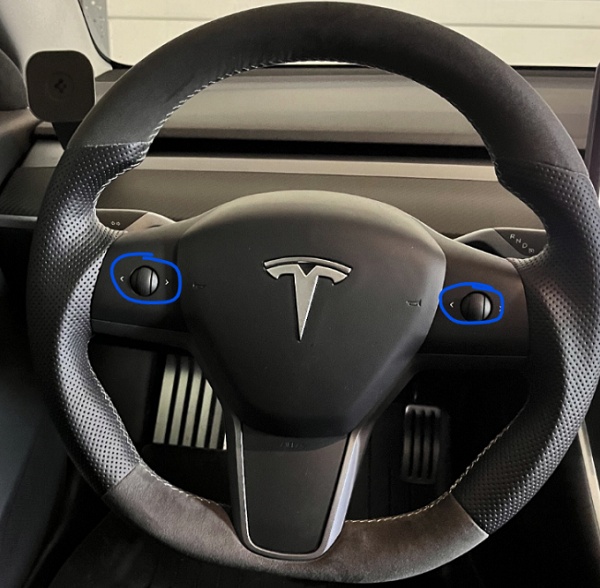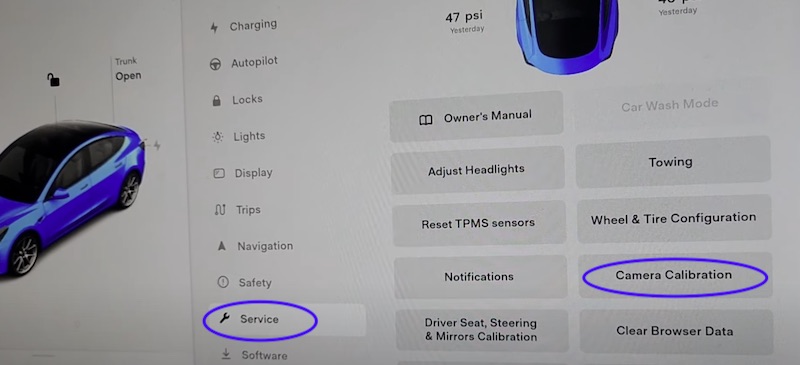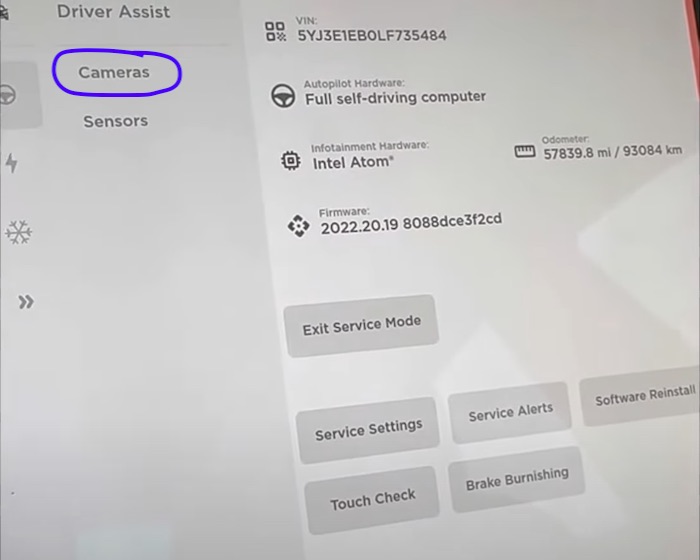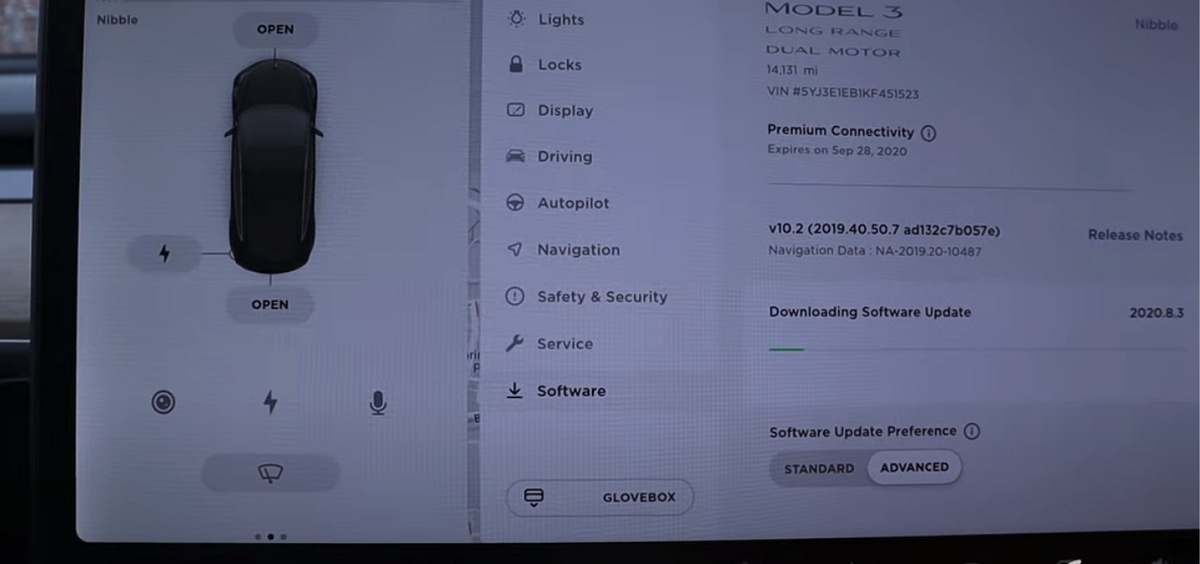If you are experiencing issues with your Tesla’s cruise control, such as the “Cruise Control Unavailable” error message, there are several possible causes and solutions.
Traffic-Aware Cruise Control (TACC) feature is an advanced cruise control system that uses a combination of cameras, radar, and ultrasonic sensors to detect and respond to traffic accordingly.
When you engage TACC, your Tesla will automatically accelerate and decelerate based on the speed of the vehicle in front of you. If the vehicle in front of you slows down or stops, your Tesla will do the same. If the vehicle in front of you speeds up, your Tesla will accelerate to match its speed, up to your set speed limit.
In this guide, I am going to discuss the common causes of Tesla showing “cruise control unavailable”, as well some proven ways to fix it.
Let’s dive right in!
Contents
There are various reasons why your Tesla cruise control may suddenly become unavailable. Some of the most common reasons are discussed below.
1. Software glitches & updates
Like any software, Tesla’s cruise control system can have bugs, causing Tesla to show “cruise control unavailable” message.
This could happen out of nowhere, or sometimes following a software update.
2. Camera Visibility Issues and Obstruction
One of the most common reasons for the “Cruise Control Unavailable” error message is reduced front radar or camera visibility. This can happen due to various reasons, including debris, snow, condensation, and glare.
In such cases, the radar and camera may not be able to detect the surroundings accurately, leading to the “Cruise Control Unavailable” message.
In some cases, dirt, debris, or condensation can block the camera’s view, causing the system to lose its ability to function properly. In such cases, cleaning the camera lenses can often resolve the problem.
3. Issues with Sensors and Radars
Tesla’s cruise control system relies on sensors and radars to detect the car’s surroundings.
Your Tesla is equipped with a front radar located within its front bumper, which is responsible for detecting objects in front of the vehicle. The radar works in conjunction with the cameras to provide a 360-degree view of the car’s surroundings.
When the front radar is working correctly, it provides the necessary information for the Traffic-Aware Cruise Control and Autosteer features to operate. These features allow the car to maintain a safe distance from the vehicle in front and keep the car centered in its lane.
However, if the front radar is not functioning correctly, the cruise control system may become unavailable.
4. Camera Calibration Issues
Another critical aspect of maintaining the proper functioning of your Tesla’s cruise control system is camera calibration. Your Tesla’s cameras need to be calibrated regularly to ensure accurate detection of the surroundings.
Failure to calibrate the camera can result in inaccurate readings, leading to the “Cruise Control Unavailable” message.
5. Road Lines and GPS
Your Tesla uses cameras and GPS to detect road lines and other objects on the road.
If the road lines are faded or missing, or if the GPS signal is weak, the car may disable cruise control and other driver assistance features.
6. Physical Damage
Another possible cause for the “cruise control” error message is physical damage to the cameras or their integrated components. Since cameras are critical for Autopilot functionality, it’s crucial to ensure they are in good working condition.
If you notice any signs of damage, such as cracked lenses or broken connectors, then the camera needs to be replaced to restore the cruise control function.
Follow the step-by-step troubleshooting steps below to fix the Tesla cruise control unavailability issue.
1. Reset the Car System
The first thing you need to do when the Tesla cruise control is unavailable is to perform a soft reset on your Tesla.
Here’s how to do that:
- To reboot your Tesla, simply press and hold down both scroll wheels on your steering wheel until the touchscreen turns off and the Tesla logo appears. This is called a soft reboot.

If the issue persists or is resolved only to come back after some time, you can try a hard reboot. Here’s how to do that:
- First, shift into park
- On the center screen, tap on “Controls” > “Safety & Security” > “Power Off”

- The screen will turn off and the car will also power off. Then, wait for at least two minutes without interacting with the vehicle (i.e don’t open the door, press any of the pedals or touch the screen while waiting). This is to ensure that the car fully shuts down and that the hard reset is successful.
- After two minutes, press the brake pedal or open the door to wake the vehicle
Once the hard reset is done, you can now enable Traffic-aware cruise control.
To do that, push the Gear stalk down once to enable Traffic Aware cruise control.

If the cruise control is still unavailable, then you need to clear the autopilot camera calibration as shown below.
2. Reset Autopilot Camera Calibration
I mentioned earlier that Autopilot camera calibration issues is one of the common reasons why Tesla cruise control might not work.

Therefore, your Tesla may require a camera recalibration to fix the cameras and restore the features.
Here’s how to do that:
- Go to the controls on your center screen, and click on the “Service” tab, then select “Camera Calibration”

- Next, click on “Clear Calibration”.

It should show “Calibration cleared successful”, and also show another notification after a few seconds.
After the calibration, the Cruise control system should be up and running again.
If that doesn’t resolve the issue for you and you are still seeing “cruise control unavailable”, then you need to reset the drive assist system.
3. Reset Driver Assist System (DAS) on Tesla
Resetting the driver assist system on your Tesla is another proven way to resolve the Tesla “cruise control unavailable”. This works on all Tesla Models – Model 3, Model S, Model Y and Model X.
Here’s how to do that:
- Go to Settings > Software
- Press and hold the model button on the screen until you see the popup to enter the access password.

- The access code is the word “service” without the quote. Enter it and click “OK”

- Once in service mode, tap on “Driver Assist”

- Type on “Camera”

- Click on “Reset DAS” (Driver Assist System)

- You will see a gateway unlock procedure, showing a locked gateway state. To authorize and unlock on, hold fully up on Turn Stalk + Brake + Key for 10 seconds.

- Once unlocked, click on “Run Odin Routine”

- You will notice the ECU shutting down and the cameras will turn grey which means they are inactive as well during the routine. You will also get an alert that “Automatic Emergency Braking is disabled“

After about 30 seconds, the system will restart and the ECU, featured and cameras should all show a green signal. If any of the cameras show a red signal, then there’s an issue with that particular camera.
- Check the Sensors as well, and they should also show green (including the Radar)

- Once done, click on the vehicle icon and tap “Exit service mode” button to exit the service mode. In some software versions, you may have to long press the button to exit it.

Now, the cruise control should be available and you should be good to go!
4. Perform a Software Update
Tesla regularly releases software updates to improve the performance and functionality of their vehicles. These updates can include bug fixes, new features, and improvements to existing features.
To check for updates, go to the Software tab on your touchscreen and tap “Check for Updates”.

If there’s an update available, follow the on-screen instructions to install it. Also, make sure you maintain a strong internet connection during update to prevent it from getting stuck.
Here’s one thing to keep in mind: If your Tesla cruise control became unavailable after a software update, the update could be the culprit. In this case, it’s best to contact Tesla Support to see if they can help resolve the issue or reverse the update. Alternatively, you can wait for a bug fix to be released.
Other than that, updating to any available software will most likely fix the issue.
5. Allow the Car to Self-Calibrate
If the issue persists, it may be due to the sensors and cameras needing calibration. Tesla vehicles are equipped with self-calibration features that can help resolve sensor and camera issues.
- To start the self-calibration process, park your vehicle in an open area with a clear view of the sky.
- Leave the vehicle in park and with the parking brake engaged for about 10 minutes. This will allow the sensors and cameras to calibrate.
- After the self-calibration process is complete, try engaging the cruise control again.
If the issue persists, however, it is recommended that you inspect the cameras for damage.
6. Inspect the Cameras for Damage
The cameras play a crucial role in gathering visual data for Autopilot features like Traffic-Aware Cruise Control and Autosteer. Therefore, when Tesla cruise control is unavailable, the next thing you need to do is inspect the cameras for disconnection or damage.
This can be done by physically examining each camera, looking for any signs of wear, looseness or damage. These include the side repeater camera as well as the front cruise control.
Also, if you noticed any of the cameras showing a red icon while in the service mode shown in step 3 above, then there’s any issue with the camera – might be disconnected (wires need to be plugged in properly) or damaged (needs to be replaced).
If you find any faulty camera, you can get a replacement on Ebay and do the repair yourself, or you can get Tesla service technicians to help you fix it.
If you choose to replace it yourself, the video below will help you with that.
7. Contact Tesla Service Support
By following the steps discussed in this guide, you should stop seeing “cruise control unavailable” on your Tesla, as well as regain access to Autopilot’s full capabilities.
If none of those methods resolve the Tesla “cruise control unavailable” notification, then you should schedule a service appointment with Tesla, through your Tesla account or the Tesla mobile app.

When you do, be sure to provide detailed information about the issue you’re experiencing, including any troubleshooting steps you have attempted. This will help your Tesla service technicians diagnose the problem more efficiently and ensure your Tesla is back to working order as soon as possible.
Conclusion
In conclusion, Tesla’s cruise control system is a highly advanced feature that offers numerous benefits to drivers of Tesla Model 3, Model Y, Model S and Model X.
However, it is important to understand that this system may not always be available due to various reasons such as weather conditions, road conditions, or technical issues.
To maintain your Tesla’s advanced driver-assistance systems, it’s essential to address any issues with the Cruise control as soon as possible by following the steps discussed in this guide.
However, if the issue persists, you should book a service appointment with Tesla to help troubleshoot the issue further.

